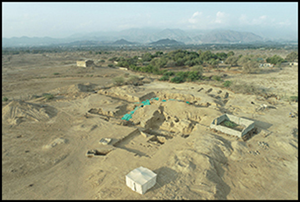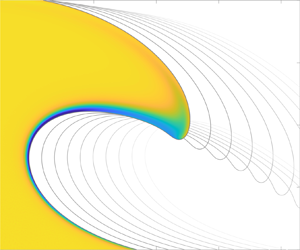Refine listing
Actions for selected content:
1416829 results in Open Access
THE DICHOTOMY BETWEEN JURISDICTION AND ADMISSIBILITY IN INTERNATIONAL ARBITRATION
-
- Journal:
- International & Comparative Law Quarterly / Volume 73 / Issue 2 / April 2024
- Published online by Cambridge University Press:
- 12 April 2024, pp. 417-446
- Print publication:
- April 2024
-
- Article
-
- You have access
- Open access
- HTML
- Export citation
Lutheranism and social responsibility. Edited by Nina J. Koefoed and Andrew G. Newby. (Refo500 Academic Studies, 82.) Pp. 267 incl. 16 colour and black-and-white ills and 3 tables. Göttingen: Vandenhoeck and Reuprecht, 2022. €90. 978 3 525 55868 3; 2198 3089
-
- Journal:
- The Journal of Ecclesiastical History / Volume 75 / Issue 2 / April 2024
- Published online by Cambridge University Press:
- 04 April 2024, pp. 382-384
- Print publication:
- April 2024
-
- Article
- Export citation
A Folsom Foreshaft from the Blackwater Draw Site
-
- Journal:
- American Antiquity / Volume 89 / Issue 2 / April 2024
- Published online by Cambridge University Press:
- 02 April 2024, pp. 263-278
- Print publication:
- April 2024
-
- Article
-
- You have access
- Open access
- HTML
- Export citation
FROM FEMALE MORALITY TO HUMAN DIGNITY: AN EVOLUTIVE INTERPRETATION OF ‘HONOUR’ UNDER ARTICLE 27(2) OF THE FOURTH GENEVA CONVENTION
-
- Journal:
- International & Comparative Law Quarterly / Volume 73 / Issue 2 / April 2024
- Published online by Cambridge University Press:
- 30 April 2024, pp. 527-542
- Print publication:
- April 2024
-
- Article
-
- You have access
- Open access
- HTML
- Export citation
TEM volume 78 issue 308 Cover and Front matter
-
- Article
-
- You have access
- Export citation
A kind of a ‘Huh?’ Artists’ publications, (not) a user's guide Nico Dockx and Johan Pas Antwerp: Track Report/Royal Academy of Fine Arts Antwerp, 2023 107 p. ill. ISBN 9789464363524 €15 (Paperback)
-
- Journal:
- Art Libraries Journal / Volume 49 / Issue 2 / April 2024
- Published online by Cambridge University Press:
- 02 October 2024, pp. 76-77
- Print publication:
- April 2024
-
- Article
- Export citation
We're in the Library!: welcoming creative practices, sharing responsibilities of access
-
- Journal:
- Art Libraries Journal / Volume 49 / Issue 2 / April 2024
- Published online by Cambridge University Press:
- 02 October 2024, pp. 46-57
- Print publication:
- April 2024
-
- Article
- Export citation
Judeopessimism: Antisemitism, History, and Critical Race Theory
-
- Journal:
- Harvard Theological Review / Volume 117 / Issue 2 / April 2024
- Published online by Cambridge University Press:
- 15 May 2024, pp. 368-390
- Print publication:
- April 2024
-
- Article
-
- You have access
- Open access
- HTML
- Export citation
Macroeconomic Expectations and Expected Returns
-
- Journal:
- Journal of Financial and Quantitative Analysis / Volume 60 / Issue 4 / June 2025
- Published online by Cambridge University Press:
- 01 April 2024, pp. 1760-1796
- Print publication:
- June 2025
-
- Article
- Export citation
Re-Territorializing the Neolithic: Architecture and Rhythms in Early Sedentary Societies of the Near East
-
- Journal:
- Comparative Studies in Society and History / Volume 66 / Issue 3 / July 2024
- Published online by Cambridge University Press:
- 01 April 2024, pp. 557-583
-
- Article
-
- You have access
- Open access
- HTML
- Export citation
ECH volume 75 issue 2 Cover and Back matter
-
- Journal:
- The Journal of Ecclesiastical History / Volume 75 / Issue 2 / April 2024
- Published online by Cambridge University Press:
- 04 April 2024, pp. b1-b2
- Print publication:
- April 2024
-
- Article
-
- You have access
- Export citation
A canonical Hamiltonian formulation of the Navier–Stokes problem
-
- Journal:
- Journal of Fluid Mechanics / Volume 984 / 10 April 2024
- Published online by Cambridge University Press:
- 01 April 2024, A27
-
- Article
-
- You have access
- Open access
- HTML
- Export citation
Numerical study of a viscous breaking water wave and the limit of vanishing viscosity
-
- Journal:
- Journal of Fluid Mechanics / Volume 984 / 10 April 2024
- Published online by Cambridge University Press:
- 01 April 2024, R5
-
- Article
-
- You have access
- Open access
- HTML
- Export citation
Ars Antiqua motets in fourteenth-century Italy: liturgical priorities, style and notation in Bodleian, lat. liturg. e. 42
-
- Journal:
- Plainsong & Medieval Music / Volume 33 / Issue 1 / April 2024
- Published online by Cambridge University Press:
- 08 April 2024, pp. 63-93
- Print publication:
- April 2024
-
- Article
-
- You have access
- Open access
- HTML
- Export citation
Christianos in CIL iv, 679: The Possibility of an Image
-
- Journal:
- New Testament Studies / Volume 70 / Issue 2 / April 2024
- Published online by Cambridge University Press:
- 03 June 2024, pp. 204-219
- Print publication:
- April 2024
-
- Article
- Export citation
Universal relative scaling of longitudinal structure functions in shear-dominated turbulence
-
- Journal:
- Journal of Fluid Mechanics / Volume 984 / 10 April 2024
- Published online by Cambridge University Press:
- 01 April 2024, A28
-
- Article
-
- You have access
- Open access
- HTML
- Export citation
The West German and Italian Left in the “Two Cultures” Debate: Trasnationalization and Localization (1964–1969)
-
- Journal:
- Central European History / Volume 57 / Issue 3 / September 2024
- Published online by Cambridge University Press:
- 01 April 2024, pp. 377-398
- Print publication:
- September 2024
-
- Article
-
- You have access
- Open access
- HTML
- Export citation
Love, Race, and Sex in Aruba and Curaçao's Energy Economy - Offshore Attachments: Oil and Intimacy in the Caribbean. By Chelsea Schields. Oakland: University of California Press, 2023. Pp. 287. $85.00 cloth; $29.95 paper; $29.95 e-book.
-
- Journal:
- The Americas / Volume 81 / Issue 2 / April 2024
- Published online by Cambridge University Press:
- 03 October 2024, pp. 363-365
- Print publication:
- April 2024
-
- Article
- Export citation













